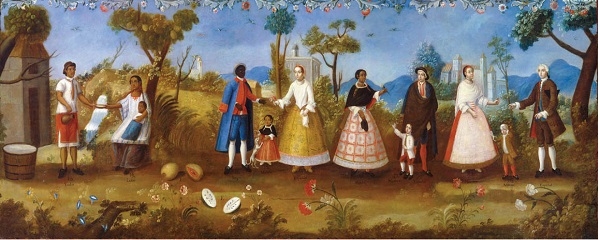Spain is a kingdom with a culture and tradition of "castes", in the colonialist era it created a differential social system of rights based on the cleansing of blood. Although our 1978 CONSTITUTION (art 14) eliminates segregation by: sex, race,... "or condition", it is paradoxical and perverse that those who hold the most power have striven to create privileges of rights (laws of aforamientos) despite being unconstitutional. In the year 2023, "the lords" are skipping the rules that watch over the conviction of a people, that is, the "Rule of Law". The economic interest underlies: fines disappear and money appears in accounts in tax havens
Caste system of the Spanish Empire
The Spanish Empire imposed a caste system in its colonies in the Americas and the Philippines. The system was designed on the basis of the ideology of blood cleansing, considered the antecedent of modern European racism. The colonial stratification system classified people into three "races": white or Spanish, indigenous and black. The blood of the people of each group was "clean", but if a man and a woman of different "races" fathered a child, the child's blood would be "stained", which would make him/her belong to a caste. Because of this, in the Spanish colonial system, the term "cruzas" or "castes" designated groups and individuals with "tainted blood" as a result of interracial sex.
Spanish imperial legislation in turn classified individuals with "tainted blood" into various types of "castes" or "cruzas", defined according to the "races" or "crosses" attributed to their ancestors. The rights that corresponded to each person were strictly determined by their classification in a "race" or a "caste", considering superior the peninsular Spaniard (born in the Iberian Peninsula) and in the "lowest" place, the slave kidnapped in Africa.
Main castes or crosses in the Spanish colonies
The main castes or crossbreeds were:
1. Mestizo: son of Spanish and Indian.
2. Castizo: son of a mestizo and a Spaniard.
3. Zambo: son of African and indigenous.
4. Mulato or Pardo: son of Spanish and African.
5. Morisco: son of mulatto with Spanish.
6. Coyote or Cholo: son of mestizo and indigenous.
7. Chino: son of mulatto and indigenous.
These were the ones that most frequently appeared in the documents of baptisms, marriages or deaths, their registration entailed discriminations or social advantages. At the end of the 18th century it became possible to pay to receive a grace to be classified as white in the records. A multitude of other names existed for different percentages of mixed bloods, but there was no consensus on their definitions. There was agreement that, the castes originated from the mixture of Indian and Spanish.





